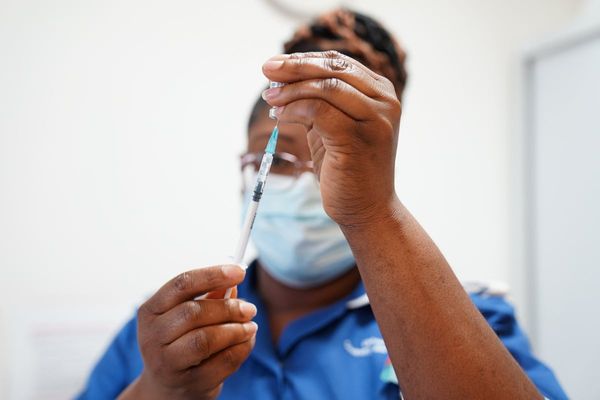
As Covid infection levels rise once more in parts of the UK, we take a look at what is behind the new wave, who can get vaccinated, and more.
What is the current situation in the UK?
According to data from the Office for National Statistics (ONS), about one in 65 people in England – an estimated 857,400 individuals – had Covid in the week ending 17 September, up from 766,500 people, or one in 70, the week before. An increase was also seen in Wales, while in Northern Ireland and Scotland the trend was unclear.
Hospital admissions rates for people with Covid are also rising: in the south-west the figure for the most recent week is 16.67 per 100,000 population – a 250% increase since mid-September.
While the most recent data shows the total reported admissions to hospital and diagnoses in hospital in England reached 7,904 in the week ending 3 October, a 33% rise from the previous seven days, asymptomatic testing through NHS settings was paused at the end of August, meaning the number of patients with Covid may be higher.
At present, about 35% of Covid patients in acute trusts are primarily being treated for the disease.
What is driving the new wave?
It is likely to be a mixture of factors. People gather inside more often as the weather gets colder, making transmission more likely. Waning immunity – whether from vaccination or previous infection – means biological defences against infection are lower, even though protection against severe illness may remain good.
Behavioural changes could also play a role, with people increasingly dropping mask-wearing and other interventions, while the return of pupils to school and students to university might have contributed to the spread.
What about variants?
While BA.5 – one of the Covid Omicron sub-variants behind the last wave – now makes up the majority of infections, there are new kids on the block too. This includes a form of BA.5 known as BQ.1.1 which, while low in numbers, is growing rapidly in the UK.
The new sub-variants are not currently thought to be any more severe than other forms of Omicron. However, experts have warned the sheer number of people who may catch Covid could prove problematic, both in terms of pressure on healthcare services and disruption due to staff sickness across many different sectors, including travel.
How big a problem is this wave expected to be?
Pressure is already mounting, with several NHS trusts sounding the alarm because of high demand on services combined with difficulties in discharging patients into social care – with some already citing Covid as a contributing factor.
Another concern is that Covid might not be the only respiratory disease causing chaos this winter: the experience of Australia suggests flu could also hit hard, raising concerns of a ‘twindemic’.
And then there is long Covid, with recent data suggesting that infection with Omicron sub-variants can, like earlier forms of Covid, lead to persistent symptoms.
Can I get another Covid jab?
At present, only certain groups of people are eligible for an autumn booster vaccination, including people who are at high risk of Covid and healthcare workers.
While the Department of Health and Social Care said there are currently no plans to make Covid vaccines available to purchase privately, as is the case for flu vaccinations, some have suggested it is a likely future development.
However, experts have raised concerns.
Adam Finn, a professor of paediatrics at the University of Bristol and a member of the UK’s Joint Committee on Vaccination and Immunisation (JCVI), said most young, healthy people will still have good protection against severe disease from previous jabs or infections, meaning the value of a booster would be to reduce their own risk of missing work and having to endure a flu-like illness following infection – the main rationale for boosting health and social care workers this autumn.
But, he added, such benefits would be relatively short-lived after vaccination, while uptake would have to be high to have even a transient impact on transmission.
Others urged caution for other reasons. “Allowing people to pay for Covid vaccines, stock permitting, would be better than not offering it at all, but has the potential to increase health inequality still further,” warned Dr Kit Yates of the University of Bath. “What would be better still would be a free offering to everyone who wants it.”
Will new measures be brought in?
It is unlikely, but that doesn’t mean there aren’t actions that individuals can take to reduce the spread of Covid or other respiratory viruses, including getting the Covid and flu vaccinations you are eligible for, improving ventilation indoors and wearing masks in crowded settings.
Experts, including Dr Susan Hopkins, chief medical adviser at the UK Health Security Agency, have also stressed the importance of staying at home if you are unwell and avoiding contact with vulnerable people.







